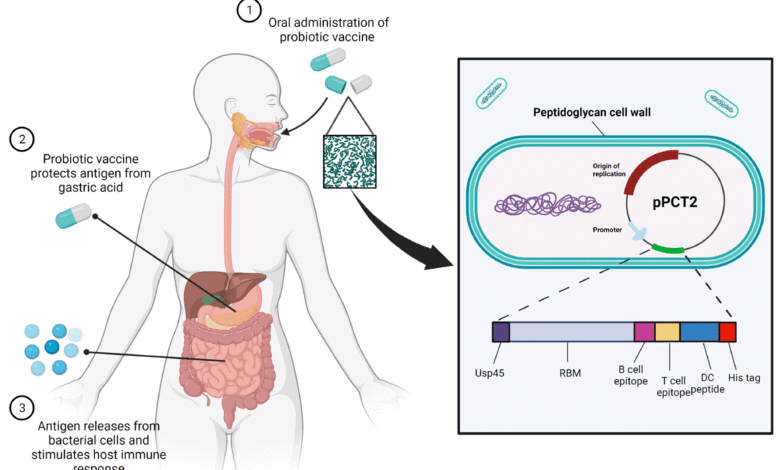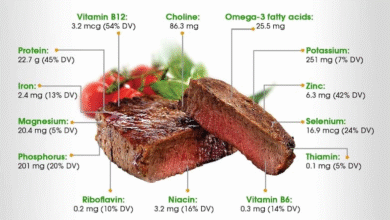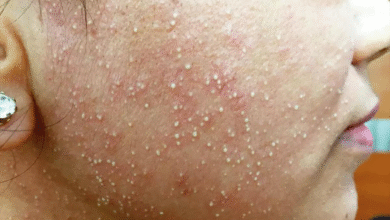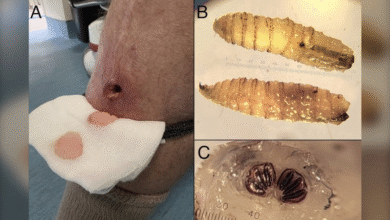Dental Floss Vaccine Delivery: A Revolutionary Breakthrough

Dental floss vaccine delivery is an innovative breakthrough that could revolutionize the way we think about immunization. Recent research from Texas Tech University and the University of North Carolina has shown that dental floss can serve as a unique delivery mechanism for vaccines, releasing them effectively through the gums. This method not only enhances oral health but also presents a promising alternative to traditional vaccination methods, especially in combating diseases like influenza. By utilizing mucosal vaccine delivery, this approach could stimulate a stronger immune response directly at the entry points of pathogens, thereby improving overall immunity. As researchers continue to explore this novel technique, dental floss may pave the way for a future where vaccination is not only less invasive but also more effective in maintaining public health.
In recent research, a novel method has emerged that utilizes everyday dental hygiene tools to facilitate vaccine administration, commonly referred to as dental floss vaccine delivery. This approach harnesses the potential of thin filaments to act as delivery vehicles for mucosal vaccines, tapping into the body’s natural defenses. It introduces a fresh perspective on vaccination strategies, positioning dental floss as a viable alternative for traditional methods by targeting oral tissue for immunization. By focusing on the junctional epithelium between teeth and gums, this technique may enhance oral health and potentially increase the efficacy of vaccines. As this innovative vaccination method gains traction, it could reshape our understanding of the intersection between dental health and immunity.
Revolutionizing Vaccination: Dental Floss as a Delivery Method
The concept of delivering vaccines via dental floss may initially sound unconventional, yet recent studies present this innovative vaccination method as potentially transformative. By leveraging the unique properties of dental floss, researchers have discovered that it can facilitate the transfer of vaccines through the gums, targeting mucosal surfaces that are crucial for boosting immunity. This approach not only circumvents the discomfort associated with traditional needle injections but also opens new avenues for preventive health strategies that utilize everyday dental care products.
In the context of dental health and vaccines, the promising findings underscore a pivotal shift in how we think about vaccination delivery. Dental floss, often deemed merely an accessory for oral hygiene, is emerging as a viable flu vaccine alternative that could significantly enhance public health initiatives. With the ability to stimulate robust antibody responses against various pathogens right at the entry points, this method could revolutionize both individual and community health management.
Understanding Mucosal Vaccine Delivery Through Flossing
Mucosal vaccine delivery systems are gaining traction in the medical field due to their potential to elicit stronger immune responses in localized areas, such as the mucosal surfaces of the gums and respiratory tract. Traditional vaccination methods primarily target the bloodstream, which may not provide optimal protection against pathogens that enter through mucosal membranes. By using dental floss for vaccine delivery, researchers are exploring a technique that promotes the production of antibodies in targeted areas, effectively enhancing the body’s defense mechanisms against infections.
The study highlights how vaccine applications via the junctional epithelium—found between teeth and gums—can produce more effective immune responses compared to standard oral delivery methods. This innovative technique not only champions the importance of oral health and immunity but also sparks curiosity in the scientific community about further applications of mucosal vaccine delivery. As research continues, there may be significant implications for addressing infectious diseases in a more efficient and patient-friendly manner.
Innovative Vaccination Methods in Dental Care
The integration of innovative vaccination methods into daily dental care routines could change the dynamics of public health policies. Imagine a future where individuals can maintain their oral hygiene while simultaneously receiving essential vaccinations through dental flossing. This dual approach could greatly improve compliance with vaccination schedules and reach populations hesitant about needle-based vaccines. The potential for dental products to serve multifaceted roles highlights an exciting frontier in healthcare.
By adopting methods that blend dental care with immunization, health professionals can target communities more effectively, ensuring broader vaccine reach. Furthermore, this unique intersection of dental hygiene and immunology underscores the need for interdisciplinary collaboration among dental and medical researchers. Such collaborations could yield solutions that address challenges like vaccine hesitancy while also improving overall oral health outcomes.
Flu Vaccine Alternatives: The Role of Dental Floss
As flu season approaches every year, the demand for effective and accessible vaccination alternatives remains high. Dental floss has now been identified as a potential tool in this fight, which could provide an alternative method for flu vaccine delivery that is both non-invasive and efficient. The ability to harness a product already familiar to the public for such a significant health purpose could make vaccinations more appealing, especially among populations that experience anxiety related to needles.
Research demonstrates that the flossing technique offers comparable effectiveness against the flu virus as conventional nasal delivery methods. By promoting the production of antibodies at mucosal surfaces, this strategy not only caters to individuals’ preferences but may also lead to higher vaccination rates. As health officials seek alternatives to boost community immunity, the dental floss vaccination method presents a promising avenue worth exploring further.
Enhancing Oral Health and Immunity Together
The relationship between oral health and overall immunity is well-documented, with studies suggesting that good dental care can prevent various diseases. With the introduction of dental floss as a vaccine delivery method, this link takes on new significance. Integrating dental hygiene practices with immunization efforts could lead to a holistic approach to healthcare, reinforcing the idea that maintaining oral health is vital for systemic immunity.
This innovative approach not only supports the immune system through direct vaccine delivery but also encourages individuals to adopt healthier oral hygiene habits. As flossing becomes part of a preventive healthcare routine that includes vaccinations, the potential overarching benefits for public health could be immense. The early research affirms that interdisciplinary strategies, combining dentistry with immunology, could play a crucial role in advancing both oral health and immune defense.
Limitations and Challenges in Floss-Based Vaccination
While the potential of dental floss as a vaccine delivery method is captivating, it is essential to recognize the limitations and challenges this innovative technique faces. For instance, this method may not be suitable for all populations, especially babies and toddlers who lack teeth. Furthermore, individuals with existing gum diseases or oral infections might not benefit from this approach without further research and adaptations. Such considerations underscore the need for extensive testing and development before going mainstream.
Moreover, questions around the local inflammatory responses that could arise from flossing with vaccine-loaded threads need to be carefully examined. The possibility of initiating undesirable side effects is a significant concern in vaccine development that must be assessed meticulously. As researchers explore these challenges, they must balance the excitement of potential breakthroughs with the need for safety and efficacy.
Future Directions: Testing Floss-Based Vaccines on Humans
Moving from laboratory success with animal models to human applications presents a critical next step in the research on dental floss as a vaccine delivery mechanism. The future research aims to explore the practicality of using floss picks, which may provide a more user-friendly experience for individuals of all ages. This transition is a vital phase in determining if floss-based vaccine delivery can be adopted successfully in public health settings.
As the clinical trials progress, there will be a need for thorough evaluations of this delivery method regarding its safety, efficacy, and potential to protect against various infectious diseases. If successful, floss-based vaccination could revolutionize how we think about routine immunizations, paving the way for integration into everyday routines. The implications for community health could be profound, ultimately leading to improved health outcomes and heightened vaccine accessibility.
The Role of Research Institutions in Dental Vaccine Delivery
Research institutions play a pivotal role in advancing the understanding of novel healthcare solutions such as dental floss vaccine delivery. Universities like Texas Tech University and the University of North Carolina are at the forefront of such groundbreaking studies, facilitating the exploration of innovative concepts that reshape traditional medical approaches. Their contributions not only provide scientific backing to emerging theories but also enhance public awareness about the possible intersections between dental health and immune protection.
Moreover, funding from organizations like the National Institutes of Health (NIH) is crucial for conducting the extensive research needed to validate these novel approaches. Continued investments in such studies can help resolve outstanding questions regarding efficacy, safety, and adoption of floss-based vaccines. The work being done at these institutions can pave the way for future advancements in both dental and immunological sciences, potentially leading to a new era of preventive healthcare.
Implications for Public Health Policy and Education
The prospect of integrating dental floss as a vaccine delivery method presents considerable implications for public health policy and education. Policymakers can leverage this information to develop comprehensive health strategies that bridge dental hygiene with vaccination education, leading to improved health literacy among communities. By understanding the dual purpose of dental care products, individuals may be more inclined to participate in both oral hygiene and vaccination initiatives.
Furthermore, educational campaigns can highlight the benefits of flossing for both dental health and immune response, reinforcing the importance of preventive measures. With an emphasis on innovative vaccination methods, public health messaging can evolve to include routine dental practices as crucial components in enhancing community health, ultimately leading to increased vaccine acceptance and participation across various demographics.
Frequently Asked Questions
What is dental floss vaccine delivery and how does it work?
Dental floss vaccine delivery is an innovative technique that uses unwaxed dental floss to administer vaccines through the gums. Research indicates that this method stimulates antibody production on mucosal surfaces, offering a new approach to vaccination that could enhance immune responses compared to traditional injections.
How effective is dental floss vaccine delivery compared to traditional methods?
Dental floss vaccine delivery has shown superior antibody responses in animal studies compared to traditional oral vaccination methods, such as placing vaccines under the tongue. It also provides similar protection levels against viruses, like the flu, when compared to nasal vaccine delivery.
Can dental floss vaccine delivery improve oral health and immunity?
Yes, dental floss vaccine delivery not only potentially improves immunity through mucosal vaccination but may also encourage better dental health by integrating flossing into the vaccination process, thus promoting oral hygiene alongside immune protection.
What are the implications of using dental floss for vaccine delivery as a flu vaccine alternative?
Dental floss as a flu vaccine alternative offers a less invasive method of immunization that could alleviate the discomfort associated with needles. This technique could make vaccinations more accessible and appealing to those hesitant about traditional injection methods.
What challenges exist for dental floss vaccine delivery in real-world applications?
Challenges include determining its effectiveness in individuals with gum disease or other oral infections. Additionally, its use in children who have not yet developed teeth poses limitations, necessitating further research to understand its broader applicability.
Is mucosal vaccine delivery through dental floss safe for everyone?
While dental floss vaccine delivery shows promise, safety and efficacy in diverse populations, especially those with oral health issues or very young children, still require comprehensive investigation before it can be widely recommended.
What future developments can we expect for dental floss vaccine delivery?
Future developments may include testing the technique in humans using dental floss picks, which are easier to handle. Continued research will focus on optimizing the delivery system to ensure safety and efficacy across various demographics.
| Key Point | Description |
|---|---|
| Dental Floss as a Vaccine Delivery Method | Study suggests dental floss can release vaccines through gums, offering a potential alternative to traditional injections. |
| Production of Antibodies | The flossing technique stimulates antibody production on mucosal surfaces, enhancing immune defense against pathogens. |
| Study Comparison | Effectiveness compared against nasal and oral vaccine delivery methods, showing superior antibody response with flossing. |
| Applications Beyond Flu | Study tested various vaccine types, including proteins and mRNA, finding robust responses across all methods. |
| Next Steps in Research | Future tests will explore delivering vaccines to humans using floss picks for practicality and ease of use. |
| Limitations | Current limitations include applicability to infants and potential issues for those with gum disease or oral infections. |
Summary
Dental floss vaccine delivery presents an innovative approach to immunization, leveraging the unique properties of the junctional epithelium between gums and teeth. This method not only stimulates higher antibody production but also enhances the body’s protective mechanisms against various pathogens, providing a promising shift from traditional needle injections. While further research is essential to address potential limitations, the potential for dental floss to serve as a non-invasive vaccination method could revolutionize how we think about vaccine delivery in the future.




